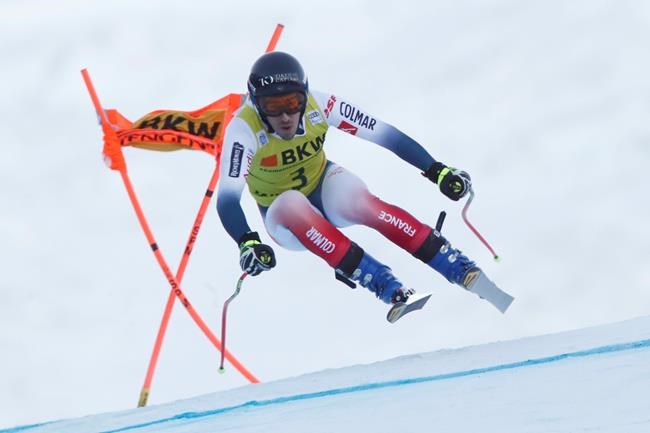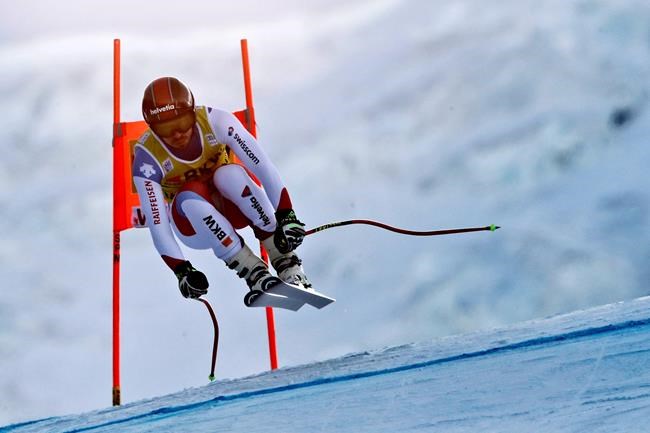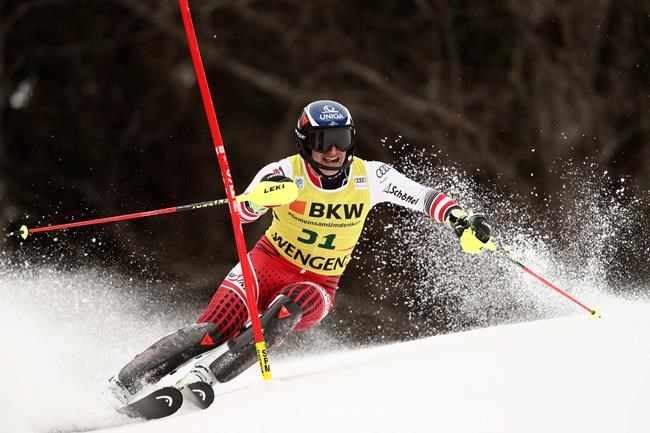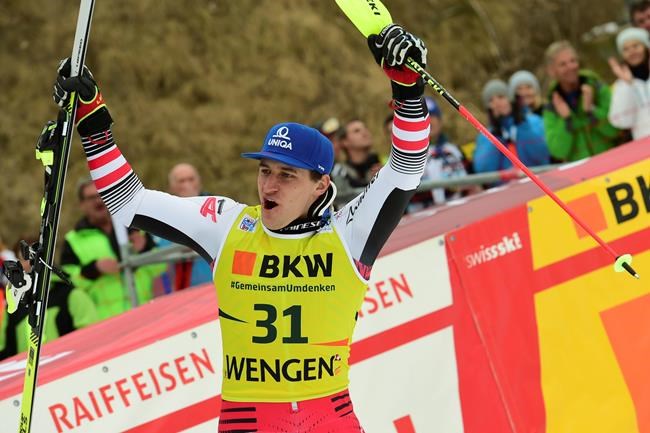Mayer benefits from new rule to win World Cup combined event
Advertisement
Read this article for free:
or
Already have an account? Log in here »
To continue reading, please subscribe:
Monthly Digital Subscription
$0 for the first 4 weeks*
- Enjoy unlimited reading on winnipegfreepress.com
- Read the E-Edition, our digital replica newspaper
- Access News Break, our award-winning app
- Play interactive puzzles
*No charge for 4 weeks then price increases to the regular rate of $19.00 plus GST every four weeks. Offer available to new and qualified returning subscribers only. Cancel any time.
Monthly Digital Subscription
$4.75/week*
- Enjoy unlimited reading on winnipegfreepress.com
- Read the E-Edition, our digital replica newspaper
- Access News Break, our award-winning app
- Play interactive puzzles
*Billed as $19 plus GST every four weeks. Cancel any time.
To continue reading, please subscribe:
Add Free Press access to your Brandon Sun subscription for only an additional
$1 for the first 4 weeks*
*Your next subscription payment will increase by $1.00 and you will be charged $16.99 plus GST for four weeks. After four weeks, your payment will increase to $23.99 plus GST every four weeks.
Read unlimited articles for free today:
or
Already have an account? Log in here »
Hey there, time traveller!
This article was published 17/01/2020 (2134 days ago), so information in it may no longer be current.
WENGEN, Switzerland – Taking advantage of a new race rule, Matthias Mayer scored a rare win for a downhill specialist in a World Cup combined event on Friday.
A new format this season gave Mayer first use of the slalom course as leader after the morning downhill. In previous seasons, the slalom order was flipped and the fastest downhiller was 30th to go on a typically rough surface.
The 2014 Olympic downhill champion from Austria put down a solid slalom run on smooth snow to set a target no one could match.

Pre-race favourite Alexis Pinturault was second, only 0.07 seconds behind Mayer after posting the best slalom time. Another French technical race specialist, Victor Muffat-Jeandet, was third, 0.67 behind.
Mayer seemed surprised in the leader’s box, smiling and clapping his hands above his head as first Muffat-Jeandet and then world champion Pinturault failed to unseat him.
Asked if he could have won under the old format, Mayer said: “I don’t think so. It was a really fair race today.”
Mayer’s seventh career World Cup win was his first outside the speed disciplines of downhill and super-G. He has Olympic gold medals in both of those disciplines.
It was also the first win in a World Cup combined for a top speed racer since Kjetil Jansrud’s victory in Wengen four years ago. Jansrud placed seventh on Friday.
Pinturault praised the new format though it likely denied him a 10th career World Cup win in combined.

“It’s important,” he said. “The combined has to be a real challenge between downhill and slalom.”
Pinturault earned 80 points to retake the overall World Cup lead from Henrik Kristoffersen by two points. Kristoffersen does not enter the combined, but they will renew their rivalry in Sunday’s slalom.
Mayer remains fifth in the overall standings in a wide open race to succeed Marcel Hirscher, who retired in the off-season after a record eight straight titles.
The Austrian racer’s mastery of the Lauberhorn hill this week positions him as a favourite in the classic downhill on Saturday.
During the downhill, Adrian Smiseth Sejersted crashed into safety nets and was airlifted from the course by helicopter. There was no immediate report on his injuries.

Mayer benefited from a later start in the downhill and clocked a peak speed above 149 kph (92 mph). He wore bib No. 31 when sunshine had risen above the surrounding mountains to better light the icy, hard course.
On merit, Mayer would have an earlier start with the higher-ranked skiers. However, he failed to finish slalom in his past four combined events, including at the 2018 Pyeongchang Olympics where he was third after the downhill.
An aggressive run by Aleksander Aamodt Kilde wearing the No. 1 bib showed how tough conditions were. Kilde was the first of many to fly high and long off the signature Hundschopf jump with landings measured at 44 yards (40 metres) from takeoff.
“It’s not fun when you’re thinking you’re never going to land,” said Kilde, who finished the event eighth. “It was a little bit on the limit. The skis are getting burned and then you lose your grip.”
Racing with the fastest time in downhill, 2017 worlds bronze medallist Mauro Caviezel brushed the safety fences in mid-jump and later went out at a tight turn.

___
More AP sports: https://apnews.com/apf-sports and https://twitter.com/AP_Sports











